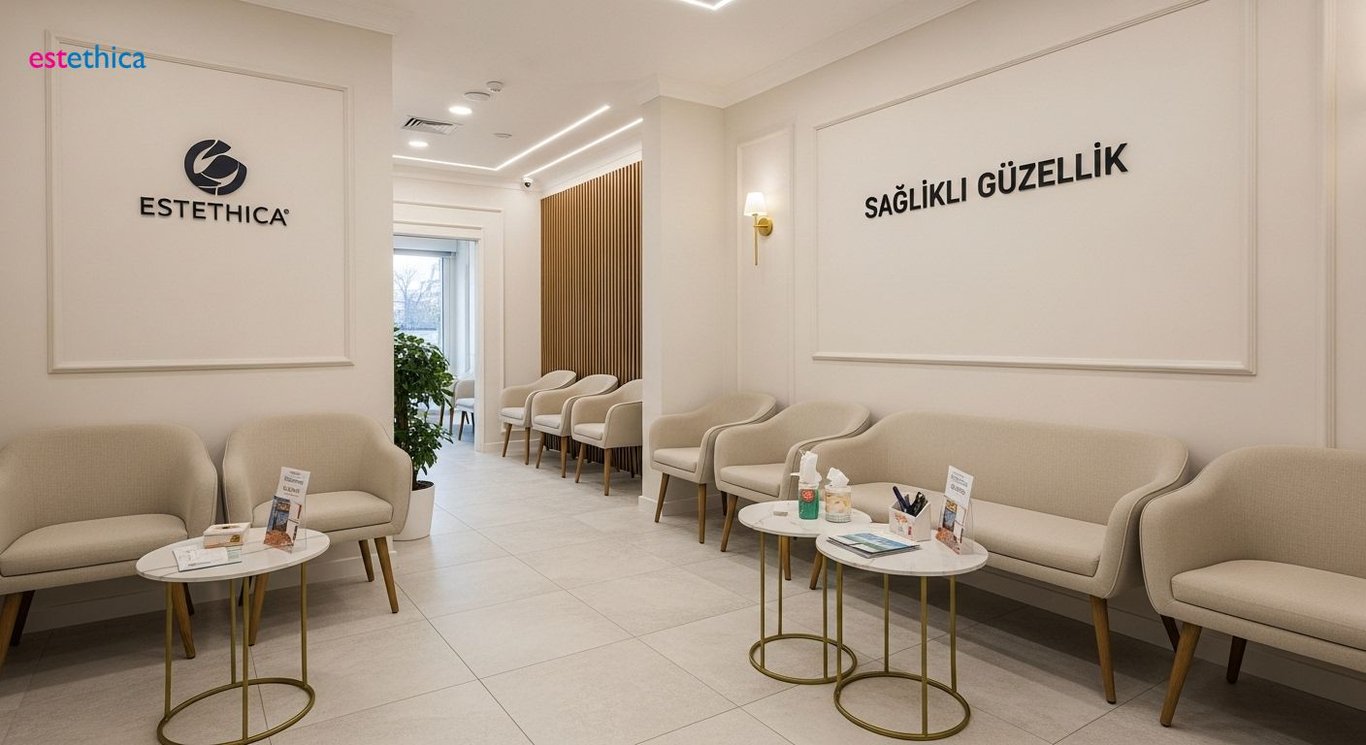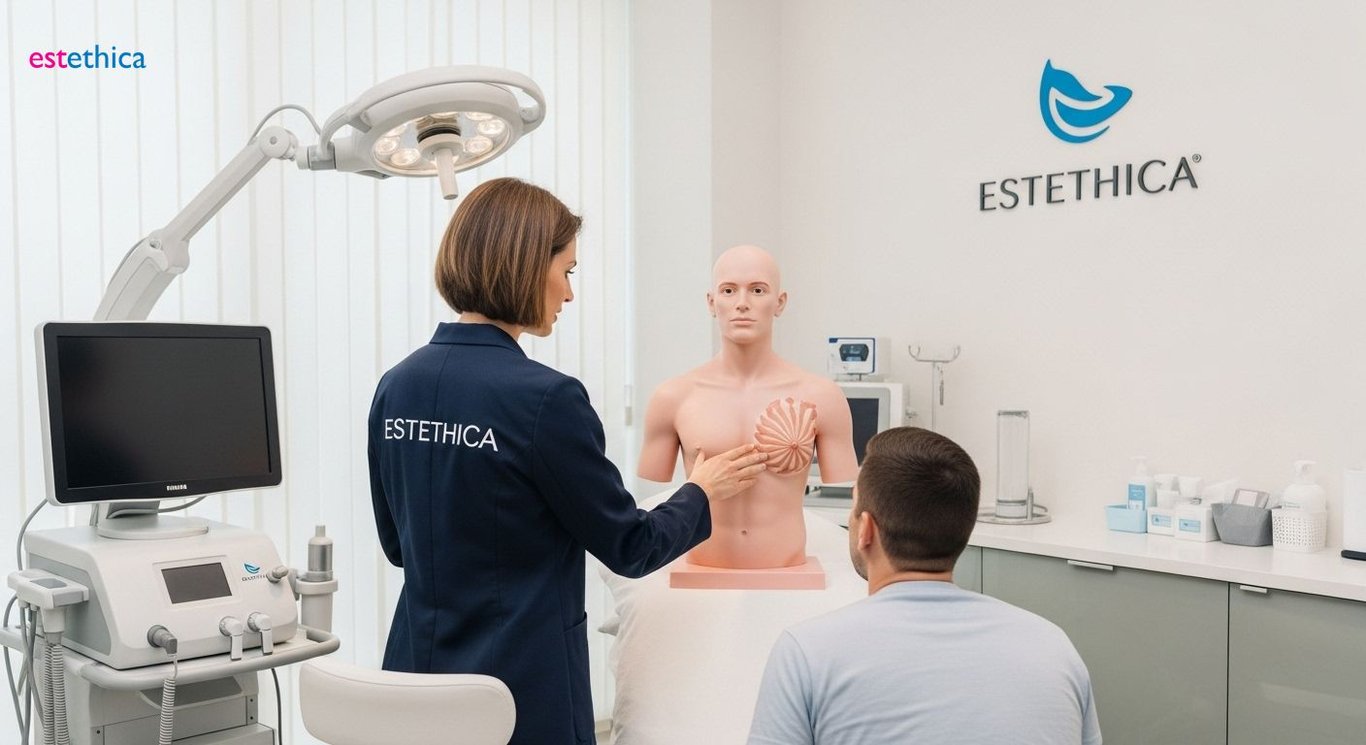Gynecomastia: Unveiling Solutions for Male Chest Concerns
<p>Unveil solutions to male chest concerns with comprehensive insights into gynecomastia, treatment options, and recovery paths.</p>
Discover the causes and solutions for gynecomastia, a condition affecting men worldwide. Learn about the surgical and non-surgical treatment options available, and the recovery process following treatment. Gain insights into how lifestyle changes can impact your results and ensure long-term success.
Understanding Gynecomastia: Causes and Diagnosis
Identifying the Primary Causes of Gynecomastia
Gynecomastia is characterized by the enlargement of breast tissue in males. This condition often stems from hormonal imbalances where there is a higher level of estrogen compared to testosterone. Gynecomastia can affect one or both breasts and may present unevenly. Addressing this issue often begins with understanding the contributing hormonal factors.
Additional factors can contribute to hormonal imbalances, including certain medications, health conditions, and lifestyle choices. For example, anabolic steroids and some anti-anxiety drugs can disrupt the body's hormonal balance. Health conditions such as kidney failure and liver cirrhosis can also affect hormone levels. Early diagnosis and management are key to mitigating the effects of gynecomastia. Identifying the underlying cause can lead to more targeted and effective treatment strategies. Seeking professional medical advice ensures a personalized approach. More information on gynecomastia can be found at: Gynecomastia: Uncover the Facts & Solutions for Male Chest.
Diagnostic Methods for Gynecomastia
Diagnosing gynecomastia typically involves a detailed physical examination by a healthcare professional. As part of the process, the doctor will take a thorough medical history to identify potential underlying causes, such as medication side effects. A physical exam helps determine the extent and nature of the breast enlargement. Additional diagnostic tests, like blood tests, can measure hormone levels, such as estrogen and testosterone.
- Physical Examination: A medical professional assesses the breast tissue to differentiate between fat and glandular tissue. For accurate diagnosis, this step is essential.
- Hormone Level Testing: Blood tests check estrogen and testosterone levels to identify hormonal imbalances. Recognizing these imbalances enables proper treatment planning.
- Imaging Studies: If deemed necessary, ultrasounds or mammograms rule out other conditions (such as tumors). Imaging offers additional clarity for complex cases.
In some instances, further imaging studies like ultrasound or mammography may be necessary to rule out other conditions, particularly if there are concerns about breast cancer. Early and accurate diagnosis of gynecomastia helps in managing the condition effectively and alleviating patient concerns. For example, if an adolescent boy presents with breast enlargement, pediatric endocrinologists often conduct a thorough evaluation to determine the cause. Similarly, in older men, possible hormonal changes related to aging might be explored. One should consider the potential for gynecomastia spironolactone usage, as its effects on hormonal balance are well-documented.

Male Breast Reduction Surgery: Reshaping Your Chest with Confidence
Understanding the Male Breast Reduction Procedure
Male breast reduction surgery, also known as reduction mammoplasty, is a targeted surgical intervention designed to eliminate excess breast tissue and create a firmer, more masculine chest profile. This procedure is particularly beneficial for individuals experiencing gynecomastia, a condition characterized by enlarged male breasts. The goal is to restore confidence and improve body image through surgical techniques.
Typically conducted under general anesthesia, male breast reduction involves a combination of liposuction and surgical excision. Liposuction is used to remove excess fat, while excision is employed to eliminate glandular tissue and skin. The specific approach depends on the severity of the gynecomastia and the patient's anatomical structure. For instance, a teenager with mild gynecomastia might only need liposuction, if the skin elasticity is ideal. Conversely, an older adult with significant tissue excess might require both liposuction and excision. The precise surgical strategy is customized to meet individual needs. Remember to consider the potential impact of gynecomastia spironolactone usage, especially regarding its effects on male breast tissue. More can be learned from trusted professional medical resources.
Recovery and Post-Operative Care
The recovery period following male breast reduction surgery is a crucial phase that requires adherence to specific guidelines to ensure optimal healing. Initially, patients are advised to wear a compression garment to minimize swelling and support the newly contoured chest. This garment typically needs to be worn for several weeks. Pain management includes prescribed medication to alleviate post-operative discomfort. It’s essential to avoid strenuous activities during the first few weeks to prevent complications and facilitate proper recovery.
- Compression Garment: Wearing a compression garment reduces swelling and supports the chest. Continuous wear, as directed by the surgeon, is imperative.
- Activity Restriction: Avoiding strenuous activities for several weeks post-surgery aids healing. Light activities are gradually introduced.
- Follow-up Appointments: Regular check-ups with the surgeon monitor progress and address concerns. These appointments ensure optimal outcomes.
One example of post-operative instructions might include avoiding heavy lifting for at least six weeks. Another recommendation might be to keep incision sites clean and dry to prevent infection. Patients are typically scheduled for follow-up appointments to monitor their healing progress and address any potential issues. Many patients discover enhanced comfort and a rejuvenated appearance, greatly increasing their confidence. For further information and individualized guidance, consider consulting with estethica surgeons.

Non-Surgical Treatments: Exploring Alternatives for Enlarged Male Breasts
Exploring Medication Options for Gynecomastia
In some instances, medications can be employed as a non-surgical approach to managing gynecomastia. Specifically, drugs that can modulate hormone levels may offer relief. For example, selective estrogen receptor modulators (SERMs) like Tamoxifen can be prescribed to block the effects of estrogen in the breast tissue, thereby reducing its size. Another medication is Clomiphene, which can also help balance hormone levels by stimulating the production of testosterone.
However, the suitability of these medications varies greatly depending on the underlying cause of the gynecomastia. If the condition is due to specific drug use or an underlying medical condition, addressing these primary factors is crucial. Medication is most effective when hormonal imbalance is the clear culprit. These treatments require close medical supervision to manage potential side effects and ensure effectiveness. The use of gynecomastia spironolactone has been explored in some contexts; healthcare providers assess each situation individually. These non-surgical interventions can be quite beneficial, but the approach is highly individualized and must be managed by a healthcare professional.
Lifestyle Adjustments and Their Impact on Gynecomastia
Lifestyle adjustments, including exercise and dietary changes, can play a supportive role in managing gynecomastia, particularly in cases of pseudogynecomastia, where enlarged male breasts are primarily due to excess fat rather than glandular tissue. Incorporating regular physical activity can reduce overall body fat, potentially diminishing the appearance of enlarged breasts. Aerobic exercises, such as running or swimming, combined with strength training, can help build muscle mass and reduce fat. These adjustments are most effective when part of a holistic approach. The potential benefits depend strongly on the individual's overall health status and commitment to lifestyle changes.
- Regular Exercise: Consistent physical activity helps reduce overall body fat. Integrating cardio and strength training maximizes benefits.
- Balanced Diet: A healthy diet minimizes fat accumulation and supports hormonal balance. Prioritize whole foods and limit processed items.
- Avoidance of Alcohol and Drugs: Limiting alcohol and avoiding recreational drugs helps maintain hormonal stability. These substances can exacerbate gynecomastia.
Dietary adjustments are also beneficial. A balanced diet rich in fruits, vegetables, and lean proteins can support hormonal balance and reduce overall fat accumulation. Avoiding excessive alcohol consumption and certain medications that could exacerbate hormonal imbalances is a vital step. In younger individuals, these changes can sometimes lead to noticeable improvements over time. For instance, an adolescent boy who reduces his intake of processed foods and increases his physical activity could see a reduction in chest fat. Conversely, an older man might find that limiting alcohol intake can help stabilize hormone levels. Remember, it's always important to consult a healthcare professional for personalized medical advice. Remember to consult estethica professionals about potential procedures.

Life After Gynecomastia Treatment: Recovery and Long-Term Results
Navigating the Initial Recovery Phase After Gynecomastia Treatment
The immediate recovery phase following gynecomastia treatment is pivotal for achieving the desired aesthetic outcome. Patients typically experience bruising and swelling, which are natural responses to surgical intervention. This period necessitates careful adherence to post-operative instructions. Wearing a compression garment, as advised by the surgeon, helps to minimize swelling and support the healing tissues. Managing discomfort with prescribed pain medication is also crucial for patient comfort during this time. Regular follow-up appointments with the surgical team become essential for monitoring progress and addressing any concerns. For many, the initial weeks involve adjusting to a new routine, emphasizing rest and limiting strenuous activities.
Adhering to these guidelines helps prevent complications and ensures optimal healing. For instance, refraining from heavy lifting for at least four to six weeks post-surgery allows the chest tissues to heal properly. Similarly, maintaining proper hygiene around the incision sites minimizes the risk of infection. Patients considering gynecomastia spironolactone interactions should consult their healthcare provider for tailored medical advice and estethica surgeons. The first month post-surgery is an adjustment, but adherence to medical advice is key.
Maintaining Long-Term Results and a Healthy Lifestyle
Achieving long-term success after gynecomastia treatment involves commitment to a stable weight and adopting a healthy lifestyle. Maintaining a consistent weight prevents the recurrence of enlarged male breasts due to fat accumulation. Regular physical activity, including both cardiovascular exercises and strength training, helps preserve a toned chest contour. Additionally, a balanced diet rich in lean proteins, fruits, and vegetables supports overall health and hormonal balance. Regular check-ups with healthcare providers help identify and address any emerging issues promptly.
- Consistent Weight Management: Stable weight prevents recurrence of fat accumulation. Monitor caloric intake and exercise regularly.
- Regular Physical Activity: Cardio and strength training maintain chest contour. Engage in activities like running and weightlifting.
- Balanced Diet: Nutritious diet supports hormonal balance and overall health. Focus on lean proteins, fruits, and vegetables.
For example, avoiding excessive alcohol consumption and anabolic steroids, which can disrupt hormone levels, is vital. Regular follow-ups with a physician ensure that any hormonal imbalances are promptly addressed. Long-term success is not merely about the surgery itself but about adopting sustainable lifestyle habits that support overall well-being and maintain the aesthetic outcome achieved. Continuing to choose health promotes lasting satisfaction. It's always advised to consult estethica professionals for any lingering concerns as well, including those relating to gynecomastia spironolactone and its impact on maintaining long-term health.
Understanding Gynecomastia: Causes, Symptoms, and Treatments
Gynecomastia Diagnosis and Treatment Expertise at estethica
Comprehensive Post-Treatment Care and Long-Term Support
Frequently Asked Questions
What causes gynecomastia and how is it diagnosed?
What are the surgical options available for male breast reduction?
Are there non-surgical treatments for enlarged male breasts?
What is the recovery process like after gynecomastia treatment?
How can I maintain long-term results after gynecomastia treatment?
Achieve your aesthetic goals with a personalized treatment plan from estethica's leading experts.
📞 Book Your Free Consultation!